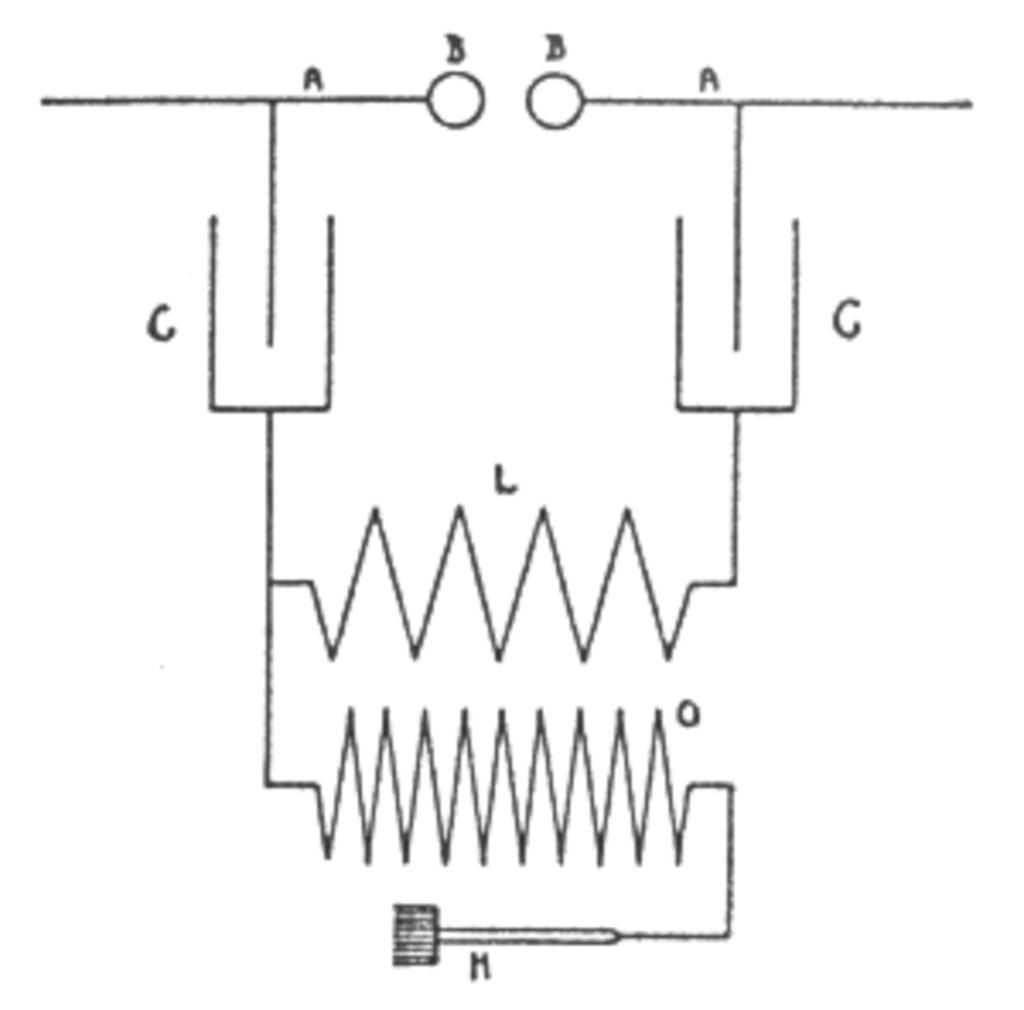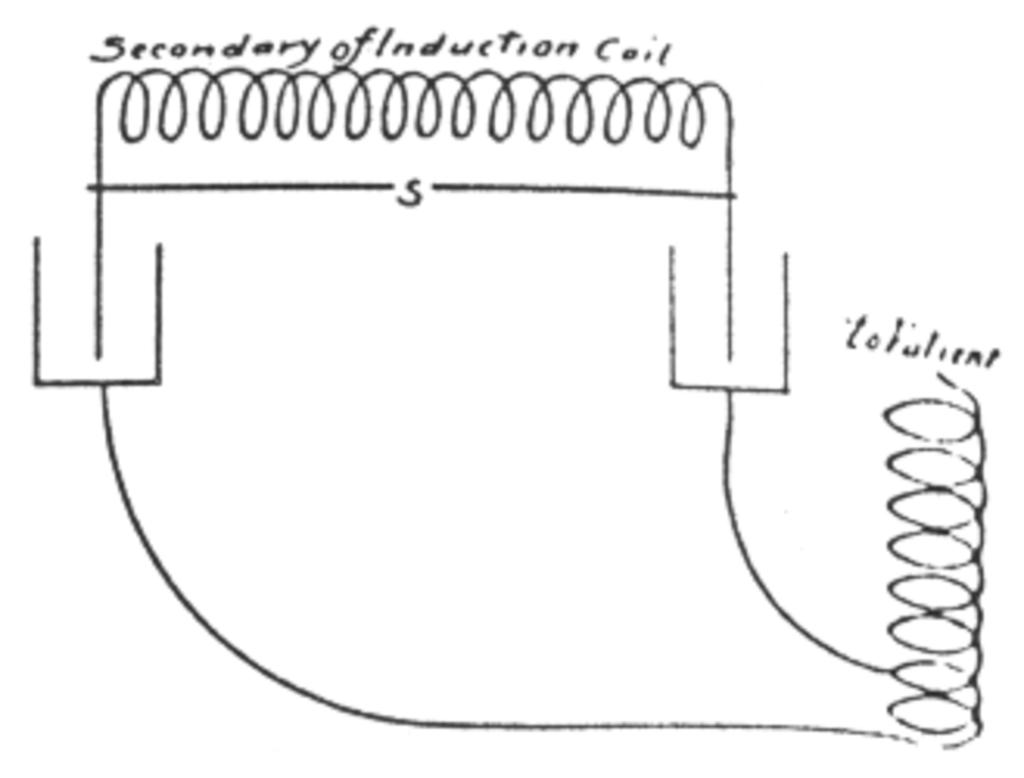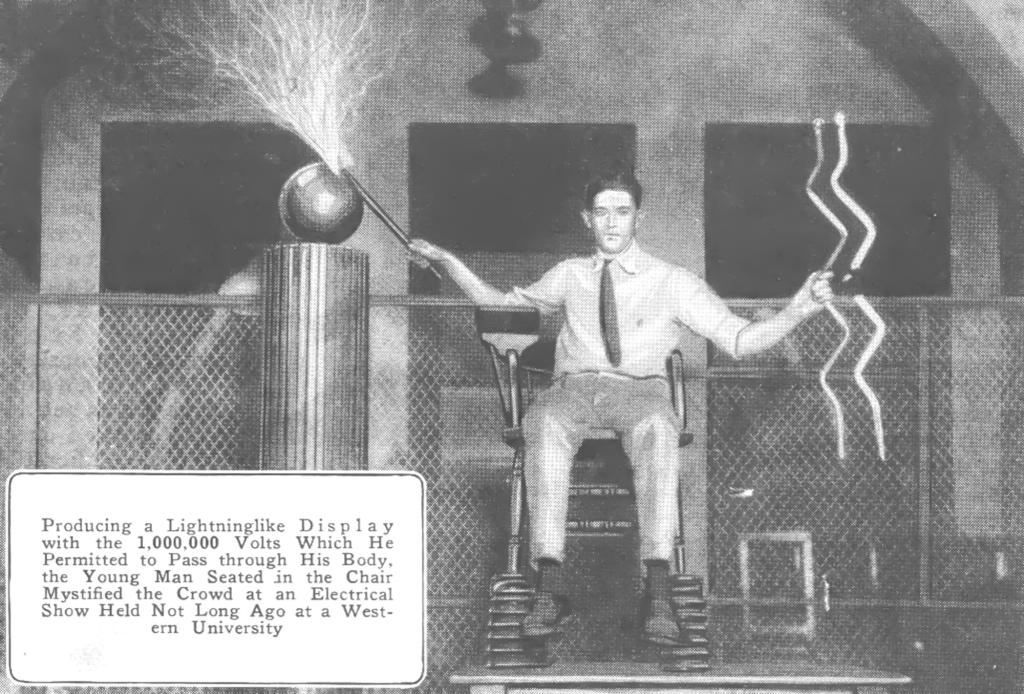TCBA Volume 4 - Issue 1
Page 6 of 18
The Oudin Coil
(continued)
Oudin's arrangement evolved into the form of coil we know today as shown in Figure 6. A typical Oudin medical coil consisted of one continuous winding of 50 or more turns on a wooden form about 24 inches long and 12 inches in diameter. The primary was formed by attaching the input lines at two points of the lower portion of the coil. The remainder of windings made up the secondary coil. Consequently, the principle of the Oudin coil is based upon conductive coupling between the primary and secondary windings.
It should be clear to the reader that the major difference between the Oudin and Tesla coil is a matter of coupling and not whether the effect produced is monopolar or bipolar. That is, a single ended high frequency coil is NOT necessarily and Oudin coil. And it might be stated that a bipolar coil is not necessarily a Tesla coil. By making contact at two points in the center of the windings, an Oudin coil could produce bipolar output. A true Tesla coil has inductive coupling between the primary and secondary - the two windings being separate coils. On the other hand, a true Oudin coil has conductive coupling between the primary and secondary windings.
The results produced by the various arrangements were somewhat different in terms of voltage, current, and frequency. Tesla's coil produced the highest voltage while D'Arsonval's helix produced the highest current. The Oudin coil became popular because it was able to produce a sufficient voltage and current which was somewhere in between the other systems.
The medical industry is partly responsible for the confusion in identifying the Tesla and Oudin arrangements. They would sometimes erroneously label a monopolar coil as Oudin when, in reality, it was a Tesla coil. This became apparent to me when I was given an opportunity to examine the internal parts of an old spark gap diathermy machine. The terminal marked “Oudin” was connected to a monopolar coil of the Tesla type. We can't do much about the past but let us hope that future literature on the subject transcends the inaccuracies that have existed over the years.
- Nikola Tesla, “Experiments With Alternate Currents Of High Potential and High Frequency,” a lecture given before the I.E.E., London, February, 1892



